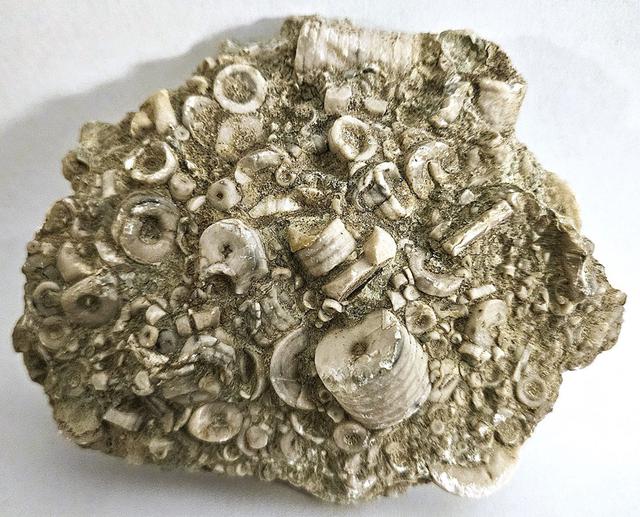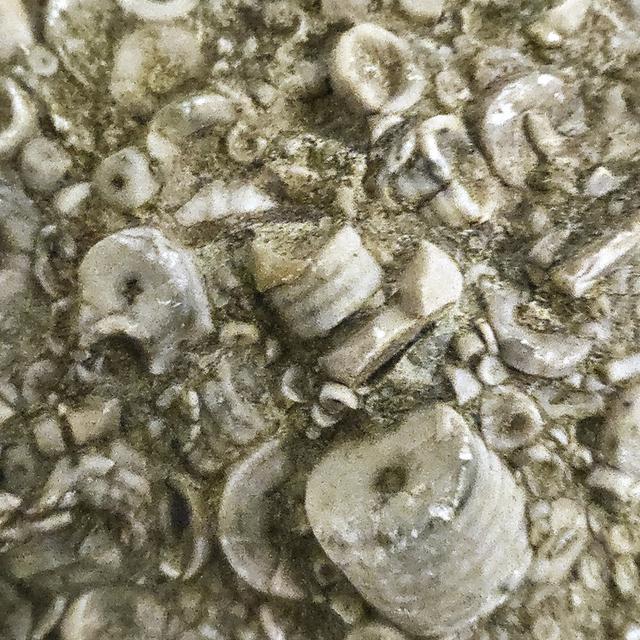Coquina
Photographed by Michael P. Klimetz
Peace River Formation
Miocene
Peace River
Arcadia
FLORIDA
Photographed by Michael P. Klimetz
Decorah Formation
Ordovician
St. Paul
MINNESOTA
Photographed by Michael P. Klimetz
Pleistocene
Anastasia Formation
Ormond Beach
Volusia County
FLORIDA
Photographed by Michael P. Klimetz
Pleistocene
Anastasia Formation
Ormond Beach
Volusia County
FLORIDA
Photographed by Michael P. Klimetz
Pleistocene
Anastasia Formation
Ormond Beach
Volusia County
FLORIDA
Coquina is a sedimentary rock that is composed either wholly or almost entirely of transported, abraded, mechanically sorted, and cemented fragments of shells of either molluscs, trilobites, brachiopods, or other invertebrates. To be considered to be a coquina, the average size of the particles composing it must be in excess of 0.2 cm. Coquina can vary in lithification from poorly to moderately-cemented. The term "coquina" is derived from the Spanish word for cockleshells or shellfish. Coquinas accumulate in high-energy marine and lacustrine environments where currents and waves result in the vigorous winnowing, abrasion, fracturing, and sorting of component shells. As a result, they typically exhibit well-developed bedding or cross-bedding, close packing, and parallel orientation of shell fragments. The high-energy marine or lacustrine environments associated with coquinas include beaches, shallow submarine raised banks, swift tidal channels, and barrier bars. Mineralogically, coquina is mainly composed of calcite, often including some phosphate compounds, in the form of shell matter or coral. Coquinas ranging from Ordovician to Pleistocene are common worldwide.
Photographed by Michael P. Klimetz
Crinoidal Biosparudite
Ectenocrinus sp.
Late Ordovician
Nashville Group
Hermitage Formation
Lynchburg
Moore County
TENNESSEE
Photographed by Michael P. Klimetz
Crinoidal Biosparudite
Ectenocrinus sp.
Late Ordovician
Nashville Group
Hermitage Formation
Lynchburg
Moore County
TENNESSEE
Photographed by Michael P. Klimetz
Crinoidal Biosparudite
Early Mississippian - Osagean
Providence Formation
Button Mold Knob Member
Button Mold Knob
Bullitt County
KENTUCKY
Photographed by Michael P. Klimetz
Crinoidal Biosparudite
Early Mississippian - Osagean
Providence Formation
Button Mold Knob Member
Button Mold Knob
Bullitt County
KENTUCKY


